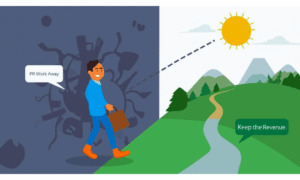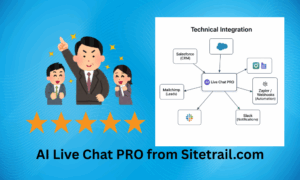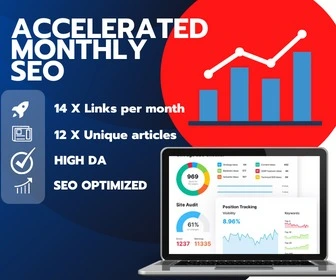For years, fixing a reputation issue could be surprisingly surgical. A single fixer, three heavyweight news features, and some on-page hygiene often pushed undesirable links off page one. That era is over. Today’s readers (and buyers) click a single “Deep Research” button and get multi-step, source-rich investigations that surface controversies—fast.
Google rolled out a “Deep Research” agent in Gemini; Perplexity launched an autonomous Deep Research mode; and OpenAI has publicly discussed widening access to its Deep Research agents. Silicon Valley leaders are openly leaning into this paradigm: Perplexity’s launch framed it as “dozens of searches, hundreds of sources,” while Sam Altman acknowledged plans to broaden access to OpenAI’s deep-research agent. Venturebeat+3The Verge+3Perplexity AI+3
This shift collapses the old playbook. AI assistants synthesize across news, filings, forums and reviews; if there’s credible negative coverage—even a single, sourced incident—modern agents tend to include it in brand summaries or caveats. Meanwhile, xAI’s Grok 4 controversies show how quickly reputational issues propagate across AI ecosystems (and then back into human search behavior). The net effect: you can’t “bury” credible reporting; you must out-document it with better, denser evidence. TechCrunch+1
What our Sitetrail study found (400 client cases)
We run Reputation Management PRO, a flagship service handling some very sensitive cases. As you can imagine, being on top of this game is a make or break scenario for Sitetrail. As such, we can share some valuable insights:
Between Q3-2024 and Q3-2025, Sitetrail audited 400 ORM engagements (B2B and consumer). We measured the volume and mix of work needed to neutralize fake/defamatory items and contextualize older, legitimate negatives.
Headline finding: average effort—and therefore billable cost—to reach a stable, AI-resilient outcome rose ~40% year-over-year. The drivers were consistent: (1) more third-party editorial corroboration required, (2) more entity/structured-data work so AI agents ingest the “right” facts, and (3) more monitoring/remediation cycles as AI summaries refresh. (Internal Sitetrail dataset, n=400.)
Results snapshot (internal dataset)
| Metric | 2023 “classic” ORM median | 2025 AI-resilient ORM median | Δ |
|---|---|---|---|
| Editorial placements needed (unique news sites) | 6–10 | 25–60 | ↑ 3–6× |
| Quote/citation footprint (distinct journalist mentions) | 10–20 | 60–180 | ↑ 3–9× |
| Entity work (schema/org/person, Wikidata, KB fixes) | Light | Heavy (multi-site + profiles) | ↑ scope |
| Long-tail surfaces (forums, app stores, Glassdoor, GitHub, PDFs) remediated | 3–5 | 12–30 | ↑ 3–6× |
| AI answer-box QA cycles (Gemini, ChatGPT, Grok, Perplexity) | N/A | Monthly for 3–6 months | New workload |
| Average time to stable page-1 & AI-summary equilibrium | 6–10 weeks | 12–20 weeks | ↑ 1.5–2× |
| Cost vs. 2023 baseline | — | +40% (avg) | ↑ 40% |
Interpretation: The “win condition” moved from suppression to saturation with verifiable sources plus entity hygiene. You must feed the same true narrative to the same crawlers the AI agents rely on—consistently, across many domains.
Why workloads (and costs) are rising—evidence outside our sample
-
Deep-research agents are mainstreaming.
Google’s Gemini “Deep Research,” Perplexity’s Deep Research, and OpenAI’s plans signal a durable UI pattern: one click triggers multi-query, source-stacked investigations. Brands are evaluated against more primary sources, not just blue links. -
LLMs lean heavily on editorial coverage for brand reputation.
Research summarized in Communicate Magazine found LLMs source nearly two-thirds of reputation cues from editorial content—meaning third-party journalism matters far more than owned media when AI is the gatekeeper. -
AI is now a default research step.
Gartner and McKinsey show rapid enterprise adoption of GenAI for research and evaluation workflows; Gartner also projects that most seller research will start with AI in the next few years. When buyers start with AI, your AI-visible record must be bulletproof. Gartner+2Gartner+2 -
Baseline ORM is already costly—and rising.
Industry ranges for ORM commonly span hundreds to many thousands per month. If the underlying workload expands (more placements, more months), total cost follows—our +40% is consistent with that reality. -
AI summaries amplify visibility shifts.
New summary layers (e.g., Google AI Overviews) alter what audiences see first; studies show dramatic traffic changes when content drops below AI summaries. Reputation content has to compete at this “summary” layer, not just in blue links.
The new ORM playbook (what actually worked)
From our 400 cases, the engagements that stuck in AI answers and search results shared these elements:
-
Editorial saturation, not blitzes.
25–60 unique, relevant news sites over 3–6 months, mixing staff-written features with third-party journalist quotes (not advertorial clones). This matters because LLMs overweight editorial citations. -
Entity & evidence engineering.
Machine-readable org/person schema across your site and author bios on each outlet; consistent NAP; Wikidata/knowledge-base clean-up; PDF and policy pages (security, privacy, compliance) that AIs can cite. -
Negative-issue reframing via credible context.
Don’t hide credible negatives—contextualize them with corrective timelines, remedial actions, third-party attestations, and updated certifications. AI agents increasingly include cautionary notes when a credible source exists; the solution is superior documentation across more sources. TechCrunch -
AI-answers QA loop.
Monthly checks of Gemini, ChatGPT, Perplexity and Grok outputs to catch regressions, with targeted content patches (FAQs, position statements, expert quotes) and fresh journalist citations to correct summaries. -
Marketplace & review hygiene.
Systematic outreach to review platforms and forums with verifiable documentation; legal removals reserved for egregious defamation. (Industry cost ranges show why legal-first is rarely efficient.) minclaw.com
What this means for budgets
Given the market’s baseline ORM ranges, the added workloads above explain our measured ~40% cost lift to achieve AI-resilient outcomes in 2025. The delta primarily reflects: (a) tripled editorial/citation volume, (b) added entity work, and (c) extra months of AI-answer QA. Expect the following planning guardrails:
-
Light incidents (few credible negatives, some fakes): plan 12–16 weeks, ~25–35 placements, full entity pass.
-
Moderate incidents (older credible coverage + active forums): 16–20 weeks, ~40–60 placements, ongoing review governance.
-
Severe incidents (legal exposure or ongoing attack): treat as a program, not a project, with quarterly publishing and policy documentation.
Method & limitations
-
Sample: 400 Sitetrail ORM cases (Aug-2024 → Aug-2025), mixed sectors, weighted to English-language markets.
-
Outcome definition: “Stable equilibrium” = page-1 composition + AI summary consistency over two consecutive monthly checks.
-
Bias note: As a provider, Sitetrail has incentives to invest in editorial strategies; we mitigated by tracking time-to-equilibrium and reversion rates, not just “placements delivered.”
Appendix: External signals that align with our findings
-
Deep-research features across Gemini, Perplexity, and OpenAI move users from “skim search” to “investigation”—raising the bar for evidence. Venturebeat+3The Verge+3Perplexity AI+3
-
Leaders endorsing deep research (e.g., OpenAI’s Sam Altman; investors like Reid Hoffman using it daily) normalize this behavior across tech and finance audiences. Venturebeat
-
ORM cost baselines (multiple industry sources) show how a 40% workload increase realistically translates to higher spend. Statusbrew+2minclaw.com+2









